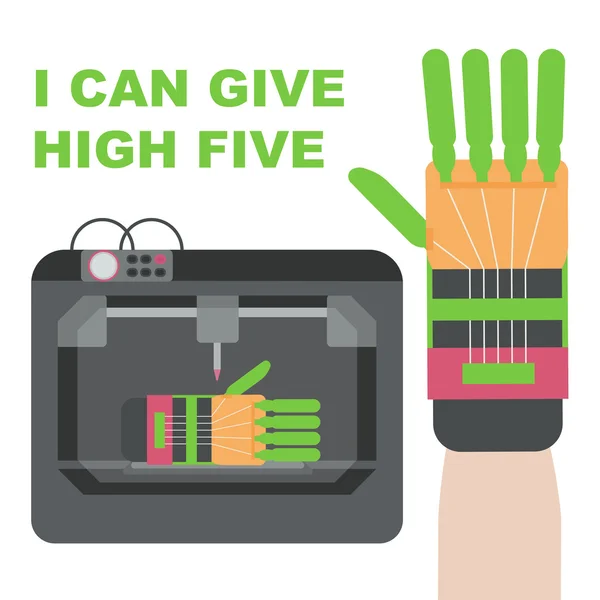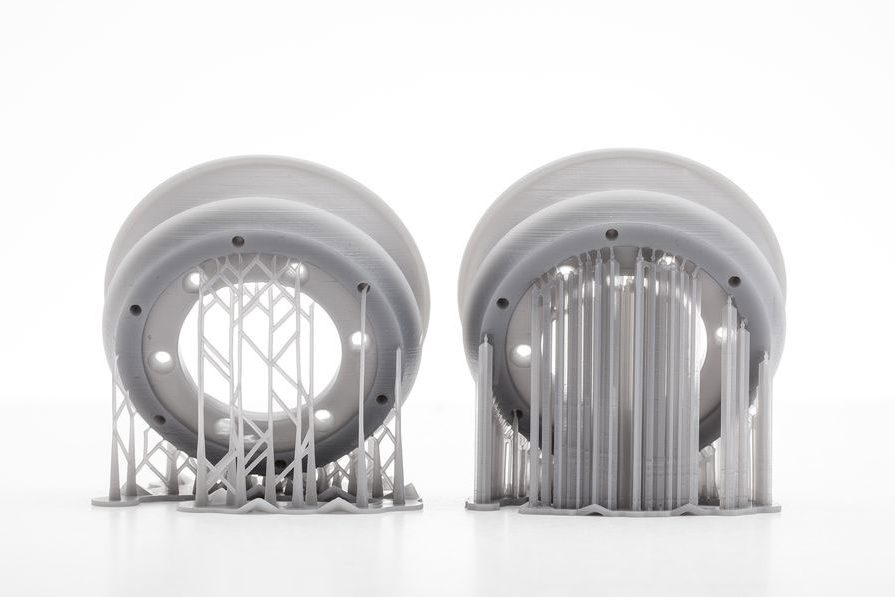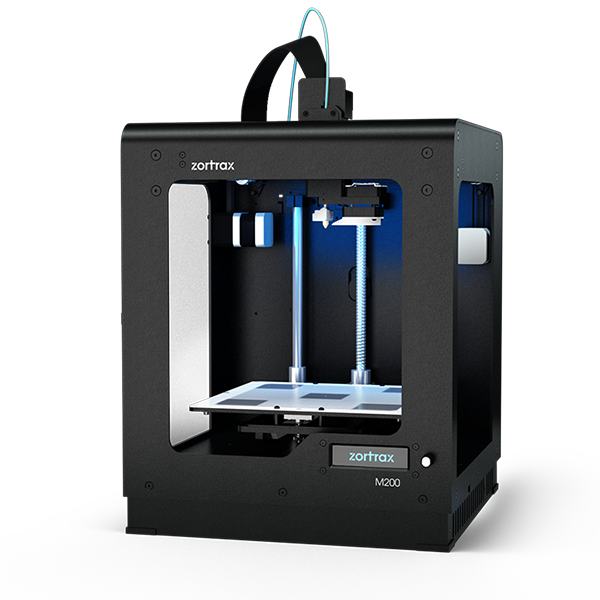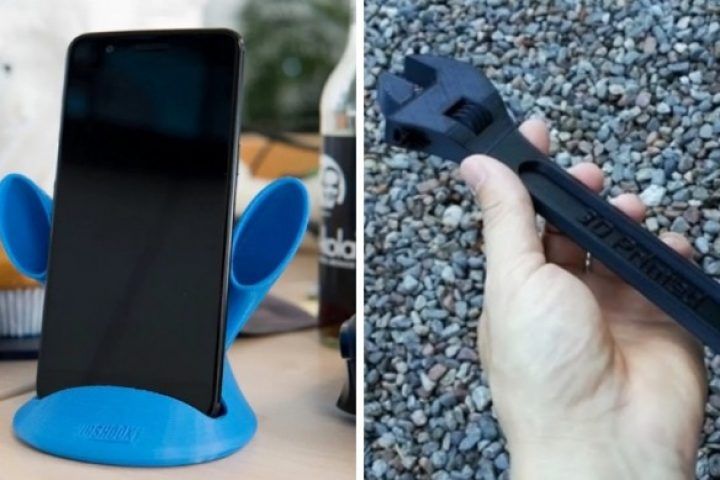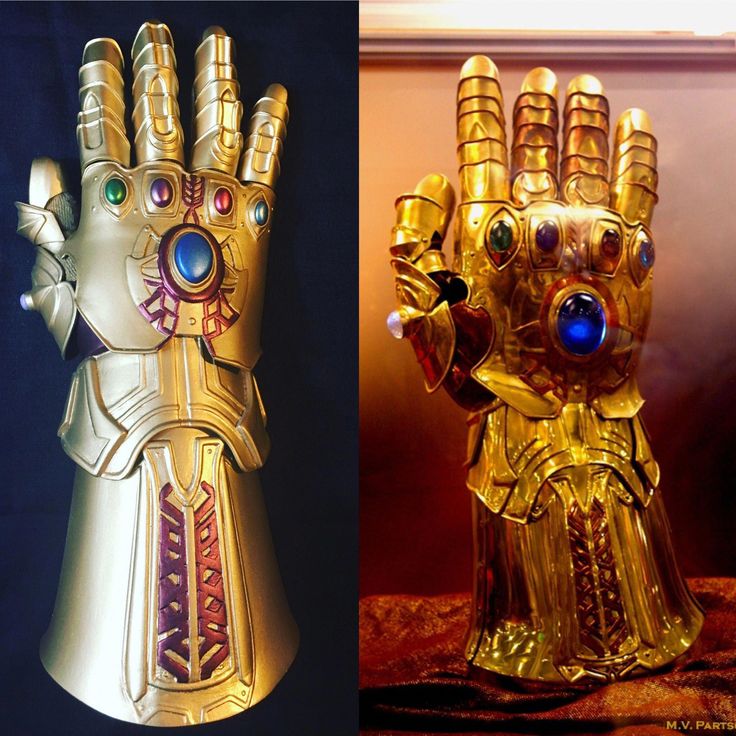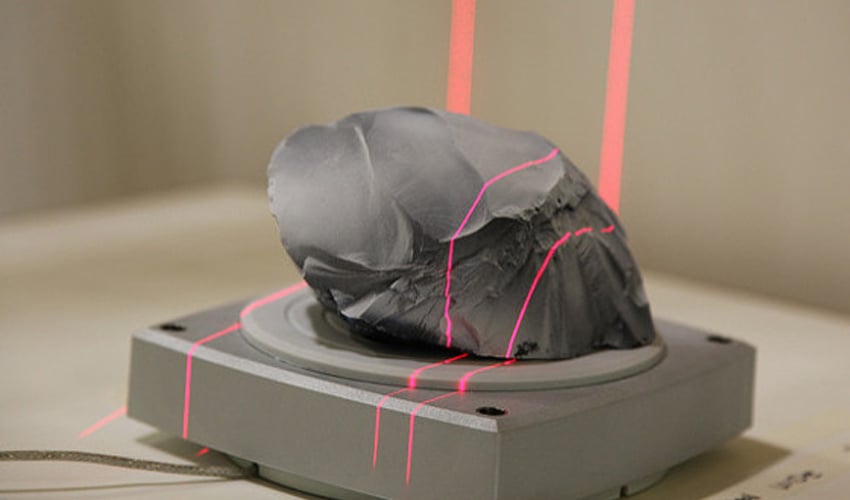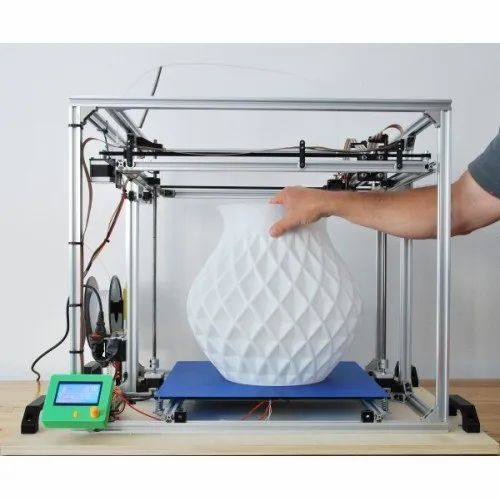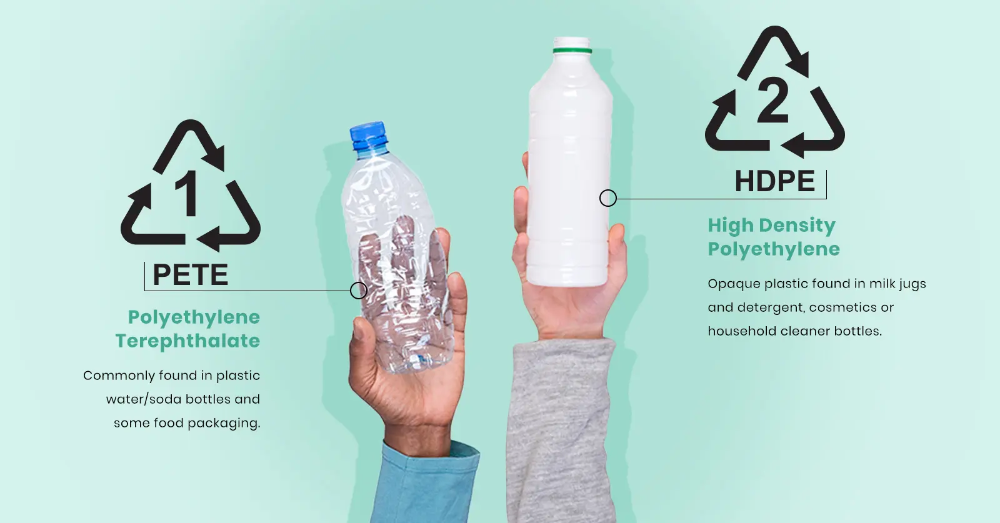Prosthetic hand made by 3d printer
Top Examples of 3D Printed Prostheses
Published on April 7, 2022 by Niru K.
When it comes to industries adopting 3D printing, one of the earliest and most fervent supporters of the technologies is of course the medical sector. Indeed, AM is becoming a crucial tool in healthcare thanks to a variety of factors. This is especially the case when it comes to prosthetics. With 3D printing, the benefits are two-fold. First, of course, the prostheses can be perfectly fit to the patient thanks to the ability to customize the part. But additionally, 3D printing enables lower-cost, local production of prostheses. As the World Health Organization estimates that 30 million people worldwide are in need of prosthetics, this can help increase availability for many especially in remote regions. We took a look at some of the top examples of 3D printed prosthetics currently available.
The E-nable association
E-nable, also known as Enabling the future , is an association created in the United States by Jen Owen. The idea behind this project is to bring together makers and enthusiasts to create a network of models of prostheses in the world that can obviously be printed in 3D. The main objective is to “give a hand” to the people who need it most, thus avoiding the high cost of a traditional prosthesis. Since its creation in 2013, the association has donated 3D printed prostheses to hundreds of people around the world.
Bionico Hand, an Open-Source 3D Printed Prosthesis
The Bionico Hand project is the brainchild of Frenchman Nicolas Huchet who has used a bionic hand since he was 18 years old. After making his own, he launched Bionicohand as a way to make more for himself and others. Essentially, what he has conceived is a myoprosthesis, his own term for a myoelectric prosthetic, that can repair itself. He aims to create something designed by and for amputees that will be available open source so anyone can make their own. The project is not yet ready, though it has been in development for a number of years now. However, the proof of concept was produced in October 2021 and the goal is to transform it into a functional prototype by the end of 2022.
However, the proof of concept was produced in October 2021 and the goal is to transform it into a functional prototype by the end of 2022.
Photo Credits: Bionico Hand
Make Your Own 3D Printed Robotic Arm with Youbionic
Created by Federico Ciccarese, Youbionic is a platform that is a little different from many on our list. It is not technically designed to create prosthetics for those in need, but rather a way for young people to enter into the robotics industry. Essentially, buyers will receive a kit with everything they need to create their very own robotic arms, including 3D printing part files. These files have been designed to be easy to print as well as oriented to obtain the best results. And best of all? There are not many parts that make up an Avatar Full Arm (one of the largest available projects), leaving users will less assembly than they might expect. On the company’s website, they have a variety of cool projects that you can buy, including full arms, hands, double hands and more.
Photo Credits: Youbionic
Unlimited Tomorrow – The Name Says it All
Unlimited Tomorrow was founded in Colorado in 2011 by Easton LaChapelle who had been working on robotic limb development for a few years. However, she decided to launch into this project after meeting a little girl who wore a prosthetic limb that had limited capabilities while still being expensive. Thus, the idea of Unlimited Tomorrow and improved prosthetics was born. It aims to support people with upper limb disabilities by using additive manufacturing to produce high quality, high value, low cost bionic prosthetic arms. 3D printing allows for the process to be customizable. This happens as after the user answers a few questions, they are then sent a 3D scanner to scan the residual limb. Based on this, the prosthesis, which can also be personalized, is produced with the 3D printer.
Photo Credits: Unlimited Tomorrow
A Distinct Prosthesis with UNYQ
3D printing is used at UNYQ to use mass production to create innovative, customized prostheses.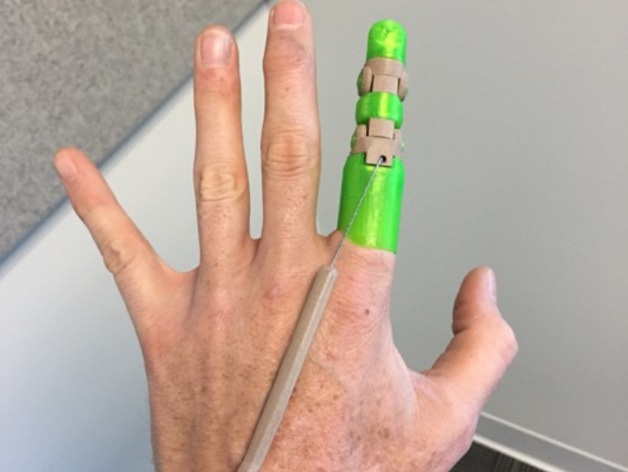 In addition to being able to develop next-generation products, additive manufacturing is also used for aesthetically pleasing and practical features. Prostheses for above and below the knee amputees offer patients revolutionary personalization in terms of color and design. Currently, they are even working on manufacturing an entire leg. UNYQ provides its patients with an app to create the 3D-printed prostheses: Color, design and surface can be selected, then measurements are taken in a clinic to finally print the prosthesis using additive manufacturing.
In addition to being able to develop next-generation products, additive manufacturing is also used for aesthetically pleasing and practical features. Prostheses for above and below the knee amputees offer patients revolutionary personalization in terms of color and design. Currently, they are even working on manufacturing an entire leg. UNYQ provides its patients with an app to create the 3D-printed prostheses: Color, design and surface can be selected, then measurements are taken in a clinic to finally print the prosthesis using additive manufacturing.
3D Printed Foot Prostheses from Mercuris
Mecuris is a German company dedicated to the development of CAD/CAM software solutions that, together with 3D printing, make it possible to create foot prostheses. Thanks to a digital platform, called Mecuris Solution Platform, users can create and customize their individual models to their liking, saving time and money. In fact, thanks to 3D technology and its flexibility, the company is able to reduce production costs by 75%.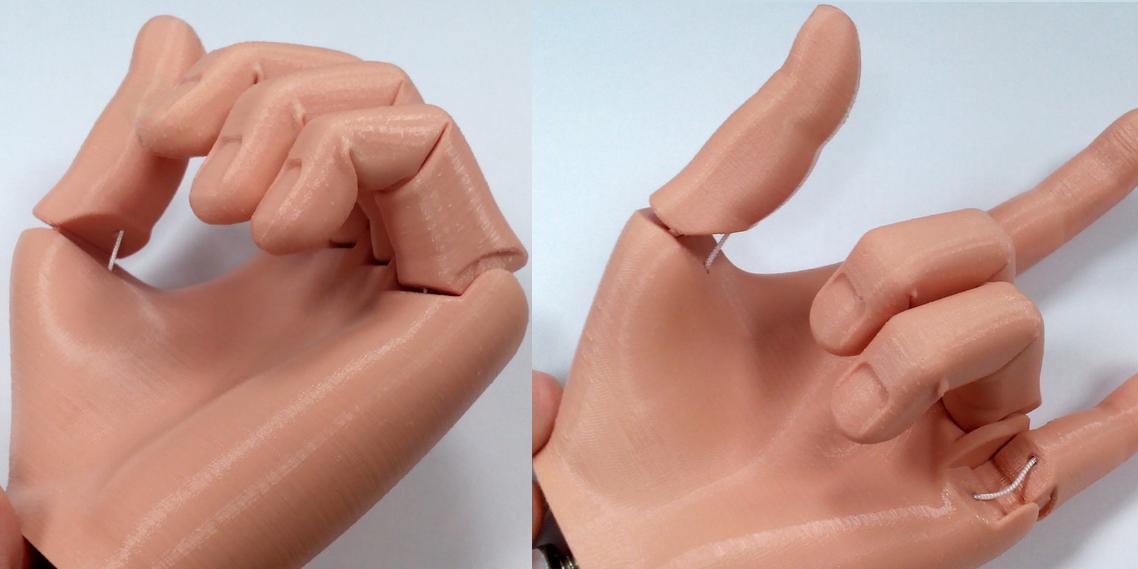 With this, Mecuris’ goal is to convert traditional craftsmanship into digital tools and workflows that are easy to use according to the needs of each individual, and accompanying customers in every step of the process.
With this, Mecuris’ goal is to convert traditional craftsmanship into digital tools and workflows that are easy to use according to the needs of each individual, and accompanying customers in every step of the process.
LimbForge Offers Prostheses in Remote Regions
LimbForge, a US-based non-profit organization, works on creating software, design and innovative manufacturing with 3D scanning and 3D printing. With these tools they are able to develop and deliver high quality and affordable custom prosthetics. LimbForge has developed and implemented a platform that allows clinicians to spend less time customizing devices and more time treating a greater number of patients. Its platform provides more realistic designs that help patients integrate and thrive, reduces costs and also offers ultralight prosthetics. The Limbforge platform can be used to size and implement other designs beyond its existing catalog. In fact, once a prosthetic design is in the database, it can be easily configured to fit almost any human anatomy.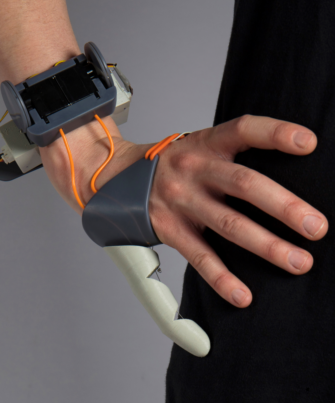 Notably, the platform is being used to help amputees in developing countries to gain access to high quality prostheses.
Notably, the platform is being used to help amputees in developing countries to gain access to high quality prostheses.
Photo Credits: Limbforge
3D Printing the Prostheses of the Future
Evan Kuester is an engineer, artist and designer currently working as a Senior Advanced Applications Engineer at 3D Systems. In addition to that, Kuester is pursuing a number of interesting projects using additive manufacturing. Among them is the development of prosthetics with extremely modern and futuristic designs. For example, in the photo below we see the JD-2 prosthesis model, created with the intention of further exploring the possibilities available to designers with SLS 3D printing technology. Its inner mesh-like structure is intended to reduce the weight of the prosthesis as well as to achieve a more pleasing aesthetic.
“Hero Arm”, a Hero for Life
Open Bionics was the first company in the world to launch a 3D printed bionic arm that would not only be clinically tested but also medically certified. This 3D printed arm is called “Hero Arm” and combines functionality, comfort and design. It is customizable and includes sensors to detect muscle movements, thus providing more ease to move. It would even be able to lift up to 8 kilos, a rather high weight when we know that the prosthesis is put and removed quickly. Open Bionics offers complete customisation of the prosthesis, a real advantage for the person who wears it, who can then create it in his own image. A particularly attractive point for children who often choose a prosthesis with the image of their hero!
This 3D printed arm is called “Hero Arm” and combines functionality, comfort and design. It is customizable and includes sensors to detect muscle movements, thus providing more ease to move. It would even be able to lift up to 8 kilos, a rather high weight when we know that the prosthesis is put and removed quickly. Open Bionics offers complete customisation of the prosthesis, a real advantage for the person who wears it, who can then create it in his own image. A particularly attractive point for children who often choose a prosthesis with the image of their hero!
3D Prostheses for the Needy
In Africa, many countries have a healthcare system that is unable to treat injuries caused by traffic accidents or infections, so it continues to experience a large number of amputations. That is why there are several non-profit organizations that want to bring printing technologies to anyone in need and anywhere in the world. One example is Ayúdame 3D, a Spanish organization that promotes the social value of technology through technological-social awareness programs in order to help vulnerable groups around the world. Both it and 3D Sierra Leone create 3D printed arms, free of charge, for people with disabilities. Thanks to this, they manage to improve their quality of life and that of their environment, reduce the inequality they face and provide them with greater opportunities for schooling and employability.
Both it and 3D Sierra Leone create 3D printed arms, free of charge, for people with disabilities. Thanks to this, they manage to improve their quality of life and that of their environment, reduce the inequality they face and provide them with greater opportunities for schooling and employability.
Naked Prosthetics and Resin 3D Printing
Based in the United States, Naked Prosthetics (NP) is a company dedicated to the development of functional prosthetic devices for hands and fingers. To do so, they rely on resin 3D printing, specifically stereolithography, with which they create these customized models adapted to the needs of each user. Thanks to 3D printing, Naked Prosthetics is able to deliver the prosthetic devices within a few weeks. As they state on their website, NP’s mission is to help people with partial amputation of fingers and hands, to change their lives positively through functional and high quality prostheses.
Photo Credits: Naked Prosthetics
A Fully 3D Printed Ocular Prosthesis
We recently learned of the UK case of Steve Verze, a Londoner, who became the first person in the world to receive a fully 3D printed ocular prosthesis. The printed prosthesis is part of a collaboration between several players in the UK and Europe, and was led by researchers at UCL and Moorfields Eye Hospital NHS Foundation Trust. The result? A prosthetic eye is impressively realistic thanks to its clearer definition and lifelike depth which was made possible with eye socket scans to ensure a good match.
The printed prosthesis is part of a collaboration between several players in the UK and Europe, and was led by researchers at UCL and Moorfields Eye Hospital NHS Foundation Trust. The result? A prosthetic eye is impressively realistic thanks to its clearer definition and lifelike depth which was made possible with eye socket scans to ensure a good match.
Lattice Medical, Fighting Breast Cancer with 3D Printing
Taking on breast cancer – that’s what Lattice MEdical, a company founded in Lille, aims to do. Founded in 2017, the company has produced a bioprosthesis called MATTISSE, which could offer an alternative to the silicone prostheses commonly used to help treat breast cancer patients. The silicone prostheses commonly used have to be replaced about every 10 years for safety reasons, which is why the MATTISSE bioprosthesis is made of an absorbable material that can be optimally adapted to the patient’s morphology thanks to the use of additive manufacturing. Lattice Medical uses FDM technology to be able to create the natural reconstruction as they regenerate the patient’s own fatty tissue.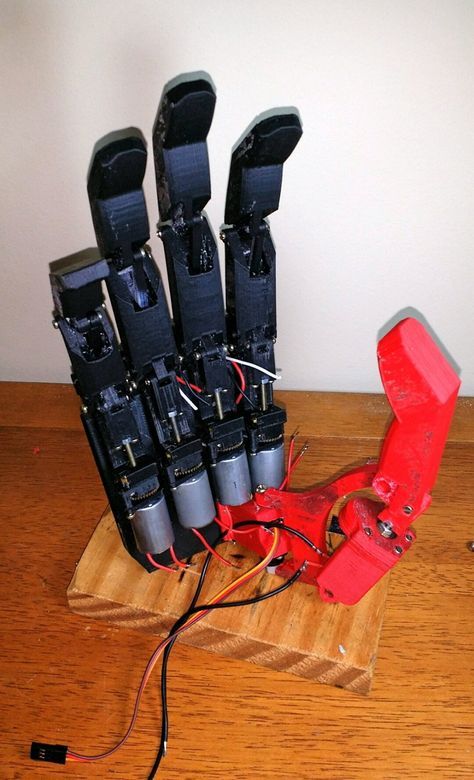
Photo Credits: Lattice Medical
What do you think of these 3D printed prostheses? Let us know in a comment below or on our Facebook and Twitter pages! Sign up for our free weekly Newsletter, all the latest news in 3D printing straight to your inbox!
BUILD A HAND – Enabling The Future
Find the files and assembly instructions you need to build a hand!
The e-NABLE community has developed a collection of different 3D-printable assistive devices that are free for download and fabrication by anybody who would like to learn more about the designs or fabricate a device for somebody in need.
If you are interested in building your own 3D printed upper limb device and have access to a 3D printer, here is the information you will need to get started:
- Decide which kind of device is recommended for the limb different person in need.
Visit our Which Design page to see what your options are and choose from the designs that are currently available and recommended for those types of limb differences. Please note, that the e-NABLE Community does not currently have designs for above elbow limb differences, so the recipient or user must have a functional wrist or elbow to make these devices function properly.
Please note, that the e-NABLE Community does not currently have designs for above elbow limb differences, so the recipient or user must have a functional wrist or elbow to make these devices function properly. - Make sure to take photographs correctly to ensure a proper fit. Watch the tutorial video to learn how to take images that will help you get the measurements you need to create a device that will fit properly.
- Refer to the e-NABLE Device Sizing page to learn how to properly size an e-NABLE device.
- Check out our e-NABLE Devices page for tutorials, assembly kits and other helpful information!
If you have any questions along the way, feel free to ask our volunteers by posting a message in the forum.
If you would like to make your own device but do not have access to a 3D printer, check our our e-NABLE Chapters page, which includes a searchable map of e-NABLE Chapters.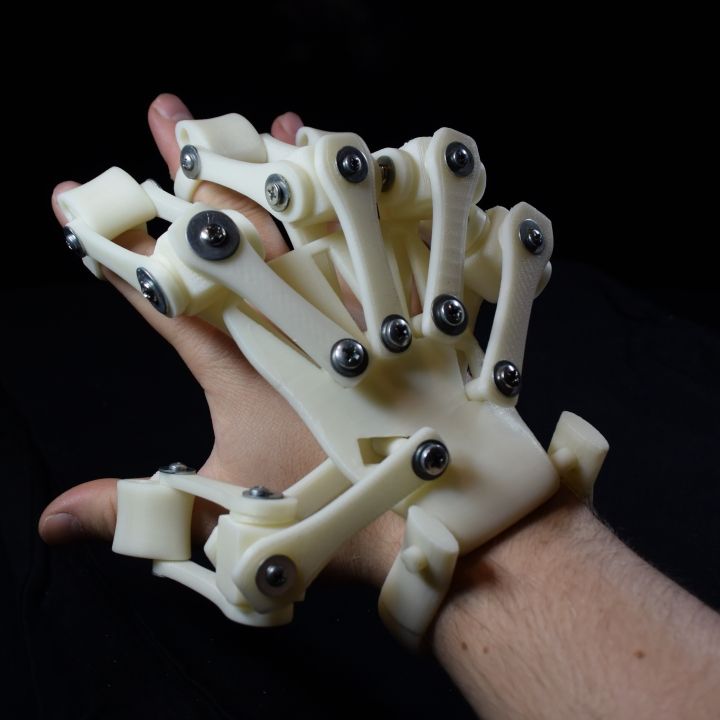 This map includes many libraries and makerspaces that may have 3D printers available for public use. You can also check this Google Map for libraries with 3D printers available.
This map includes many libraries and makerspaces that may have 3D printers available for public use. You can also check this Google Map for libraries with 3D printers available.
Please note: It is very important that you work with your physician, occupational therapist, physical therapist or prosthetist when using a 3D printed open-source e-NABLE device.
ACCEPTANCE
By accepting any design, plan, component or assembly related to the so called “e-NABLE Hand” , I understand and agree that any such information or material furnished by any individual associated with the design team is furnished as is without representation or warranties of any kind, express or implied, and is intended to be a gift for the sole purpose of evaluating various design iterations, ideas and modifications. I understand that such improvements are intended to benefit individuals having specific disabilities and are not intended, and shall not be used, for commercial use. I further understand and agree that any individual associated with e-NABLE organization shall not be liable for any injuries or damages resulting from the use of any of the materials related to the e-NABLE hand.
I further understand and agree that any individual associated with e-NABLE organization shall not be liable for any injuries or damages resulting from the use of any of the materials related to the e-NABLE hand.
Like this:
Like Loading...
3D printing in prosthetics - Center for 3D printing and prototyping
3D printing prosthetics3D printing in prosthetics
3D printer is a universal peripheral device with which you can create various physical objects of almost any orientation. Thanks to layered technology, the device allows you to print three-dimensional objects from various types of plastic, metal, plaster, etc. Recent discoveries have led to the fact that the printer for creating three-dimensional models began to be used in prosthetics. Although the direction itself is not new: prostheses printed in this way have already been used in dentistry. The device allows you to easily print the missing body part from a convenient and environmentally friendly material. Developments in this area were carried out for more than one year. The main goal of the researchers was to learn how to create an ideal prosthesis that will fit in all respects, including comfort and appearance.
Developments in this area were carried out for more than one year. The main goal of the researchers was to learn how to create an ideal prosthesis that will fit in all respects, including comfort and appearance.
The need for a perfect prosthesis
An ideal prosthesis is one that will provide functionality to the missing limb without looking intimidating. Printing prostheses on a 3D printer has many advantages. One of the indisputable advantages is the speed of printing. Compared to the conventional process, the time that specialists spend on making a prosthesis using a 3D printer is much less. In addition, this approach also makes it possible to reduce the cost of manufacturing products. This is because the amount of manual labor is significantly reduced.
Features of prostheses created on the printer
Of course, such prostheses differ from the usual ones in many ways. If this is a high-quality product, then the process of its manufacture has certain difficulties, because the design itself is a complex mechanism, which is usually assembled by hand after manufacture. Modern possibilities make it possible to create not only reliable prostheses, but also durable ones. In addition, the decisive factor is the appearance. To do this, specialists need a digital layout in which they need to accurately prescribe the necessary parameters. Only in this way will an ideal prosthesis be created that maximally repeats the anatomy of the human body. To analyze physical data, a 3D scanner can be used, and based on the data obtained, create the prosthesis itself already on the printer.
Modern possibilities make it possible to create not only reliable prostheses, but also durable ones. In addition, the decisive factor is the appearance. To do this, specialists need a digital layout in which they need to accurately prescribe the necessary parameters. Only in this way will an ideal prosthesis be created that maximally repeats the anatomy of the human body. To analyze physical data, a 3D scanner can be used, and based on the data obtained, create the prosthesis itself already on the printer.
Finally, we can highlight the main advantages of prostheses created on a 3D printer.
If you are interested in the articles on our website, then maybe you should subscribe to the newsletter? Then you can receive our articles directly to your inbox. We promise you that we will not spam your inbox. Our tactic is different - to interest a person in our field in order to expand the circle of our potential like-minded people and clients.
Benefits of 3D printed prostheses
- Price;
- Strength;
- Appearance;
- Manufacturing speed;
The cost of high-quality prostheses used in medicine is quite high, but further development of this direction will make it possible to make products more massive and significantly reduce their price. The price of domestic prostheses printed on a 3D printer is much lower than their foreign counterparts, which makes it possible for a middle-income family to purchase them.
The price of domestic prostheses printed on a 3D printer is much lower than their foreign counterparts, which makes it possible for a middle-income family to purchase them.
Do you think a prosthesis printed on a 3D printer can fully perform the necessary functions?
Maybe
Can not
Related video:
How to create prostheses on a 3D printer
https://ru.sputnik.kz/20181019/3d-printer-protez-7682906.html -technologies replace people in Almaty
We need a prosthesis - we will print it: how 3D technologies replace people in Almaty
Technologies for printing parts of prostheses on printers have been mastered in Almaty - new technologies have almost completely replaced the old ones 19. 10.2018, Sputnik Kazakhstan
10.2018, Sputnik Kazakhstan
2018-10-19T08:49+0600
2018-10-19T08:49+0600
2022-02-01T14:05+0600
/html/0meta 'og:title']/@content/html/head/meta[@name='og:description']/@content
https://sputnik.kz/img/768/01/7680120_0:0: 1502: 848_1920x0_80_0_0_6BEB0BEE09AA63016565625E1631AAB6B3.jpg
Almaty
Sputnik Kazakhstan
+74956456001 9000 MAI0004
It's hard to believe, but ten minutes ago this plastic gear was not here. It is 3D printed and the process is ongoing.
© Sputnik / Timur BatyrshinScientific and Practical Center for Social Rehabilitation
Scientific and Practical Center for Social Rehabilitation
© Sputnik / Timur Batyrshin
We are located in the "Scientific and Practical Center for Social Rehabilitation" of the Ministry of Health and Social Development in Almaty. A gear is a small thing, something like a test page of a regular printer. By creating such simple parts, a complex device is calibrated from time to time.
Technologies of the future
The first prosthesis, the sleeves for which were made in a 3D printer, was made in Kazakhstan in August last year.
© Sputnik / Timur BatyrshinScientific and Practical Center for Social Rehabilitation
Scientific and Practical Center for Social Rehabilitation
© Sputnik / Timur Batyrshin
Sleeves are plastic "glasses" into which a person puts a limb. It is clear that the manufacturing accuracy of these, perhaps the most critical parts of the prosthesis, must be very high - they have a large load, while the sleeves should not rub and injure. Therefore, they are made only individually.
"Manufacturing accuracy is needed to fully comply with the anatomical parameters. After printing on the printer, almost no adjustment is required - the loading and unloading points are displayed when scanning the patient's leg," says Mynzhasar Shugayepov, Deputy General Director of the Scientific and Practical Center for the Development of Social Rehabilitation.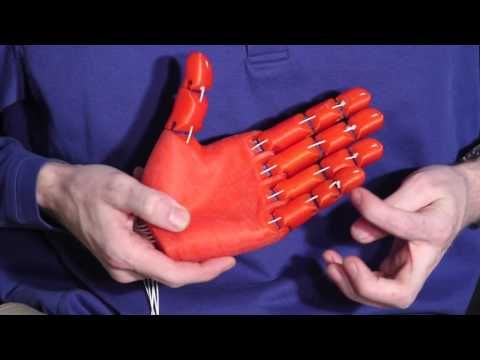
© Sputnik / Timur Batyrshin Mynzhasar Shugaepov
Mynzhasar Shugaepov
© Sputnik / Timur Batyrshin
The data is stored in the computer and transferred to the printer. The deed is done - the machine begins a long work.
One sleeve is printed for about 15 hours. It is possible and faster, but the technology is such that the faster, the weaker: the printer applies the material in layers, and the more of them, the better for wear resistance.
"So far this year no one has returned with a request to fix our prostheses," Shugaepov smiles.
© Sputnik / Timur Batyrshin Mynzhasar Shugaepov
Mynzhasar Shugaepov
© Sputnik / Timur Batyrshin
The consumable for this type of 3D printing is a plastic filament wound on a bobbin. The printer unwinds the filament, heats it up and melts it, and then feeds the plastic where it is needed. Manufacturing accuracy is described in hundredths of a millimeter. These technologies are a real find for Kazakh prosthetists.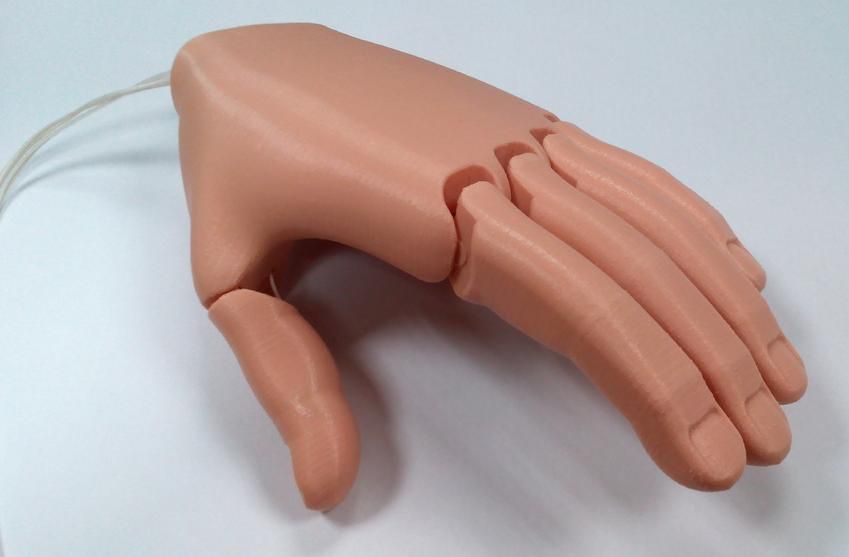
Until last August and the first printed sleeve, our manufacturers had to work only with the old methods - first a plaster cast was taken, the so-called positive was poured, then the heated plastic was molded.
"After the advent of the 3D printer, we almost do not do plaster work. Anatomically, sleeves using new technologies fit people better, most importantly, they do not require such a long adjustment as before," says Mynzhasar Sharipovich.
© Sputnik / Timur BatyrshinScientific and Practical Center for Social Rehabilitation
Scientific and Practical Center for Social Rehabilitation
© Sputnik / Timur Batyrshin
The lining of the prosthesis - a cosmetic case - can also be made on a printer. Usually the second limb is scanned, the data is loaded into the device, then the same thing, only faster: lining does not need such a margin of safety as for a cartridge case.
How to make 3D a reality
Oleg Lobakh, technical director of 3D PM, is the person who is responsible for working with 3D printers at the social rehabilitation center.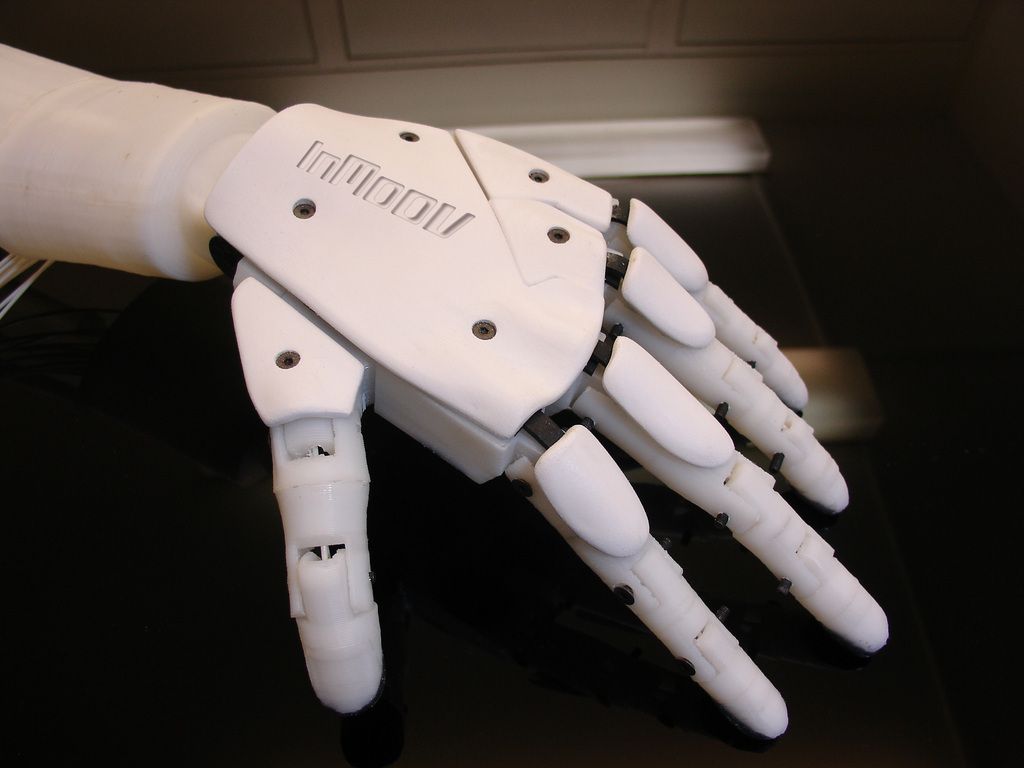
© Sputnik / Timur Batyrshin Oleg Lobakh
Oleg Lobakh
© Sputnik / Timur Batyrshin
Explains: he works here, on someone else's equipment, by agreement. In fact, his company is engaged in 3D printing on its own, but the social rehabilitation center cooperates with a private specialist Lobach for money and, rather, forcedly: there are no such specialists in specific equipment on the staff.
Lobach has been in the printing business for many years before switching to 3D printing four years ago. Then it seemed promising, and the hopes were justified. The market was absolutely free.
© Sputnik / Timur Batyrshin Scientific and Practical Center for Social Rehabilitation
Scientific and Practical Center for Social Rehabilitation
© Sputnik / Timur Batyrshin
we made a decision later. For example: four years ago in Almaty we were the only ones selling plastic for printers. Now I know at least four companies that do this. It was difficult in the first year. And now there are always orders," he says.
And now there are always orders," he says.
© Sputnik / Timur BatyrshinScientific and Practical Center for Social Rehabilitation
Scientific and Practical Center for Social Rehabilitation
© Sputnik / Timur Batyrshin
The latest orders are the production of a packaging model for khinkali and a three-dimensional model of a bottle of a new design for private companies. Jewelers often turn to ordering blanks for complex items. From unexpected orders - the printing of a model of a human bone. The order came from a surgeon at a private clinic - he wanted to rehearse the operation first on an artificial "dummy".
In addition to 3D printing, customers are interested in the possibility of accurate scanning. So, unexpectedly, a high-tech scanner came in handy for mining companies: it is easier to scan and cast replacement teeth of excavator buckets in Kazakhstan than to transport them from abroad.
© Sputnik / Timur BatyrshinScientific and Practical Center for Social Rehabilitation
Scientific and Practical Center for Social Rehabilitation
© Sputnik / Timur Batyrshin
According to Oleg Lobakh, making prostheses is the most important part of his work.
“For the first person we made a prosthesis, we remade five or six shell casings,” says Lobach. In fact, the development of the technology by the social rehabilitation center had begun six months before. In the end, everyone is satisfied with the result.
How much does a gear printed for tuning cost? Modeling - 5 thousand tenge, the printing itself is another thousand.
Old-fashioned
We move to another building of the center, go along the corridor, go through an unremarkable door. In two large bright communicating rooms, a cocktail from the smell of some unrecognizable synthetics and a locksmith's shop immediately hits your nose.
"Here, work is harmful to health - the resins from which carbon is made are poisonous," says Mynzhasar Sharipovich.
© Sputnik / Timur BatyrshinScientific and Practical Center for Social Rehabilitation
Scientific and Practical Center for Social Rehabilitation
© Sputnik / Timur Batyrshin
It is here that prostheses are assembled from sleeves, metal "joints" and other parts.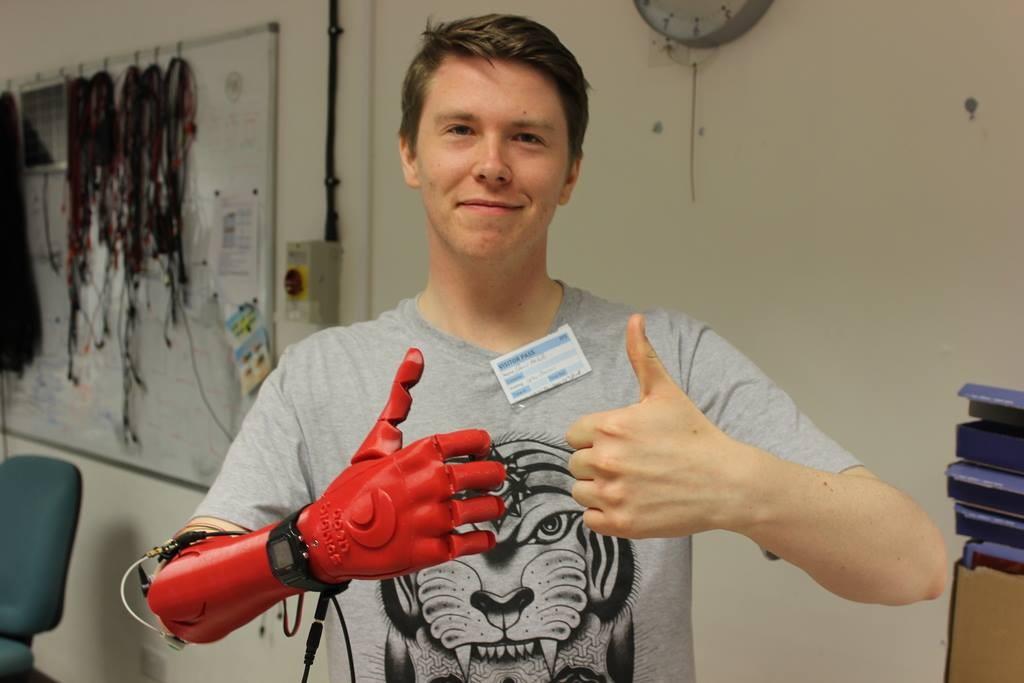 And most of these rooms with numerous machines and devices, bags of medical plaster, different containers - just what has replaced, and in the future, of course, will completely replace, a small metal cabinet of a 3D printer. Here you can see how molds are created from gypsum, wrapped in hot plastic and reinforced with carbon fibre.
And most of these rooms with numerous machines and devices, bags of medical plaster, different containers - just what has replaced, and in the future, of course, will completely replace, a small metal cabinet of a 3D printer. Here you can see how molds are created from gypsum, wrapped in hot plastic and reinforced with carbon fibre.
They still work in the old fashioned way, but the age of plaster casts is over. Employees of the conditionally "gypsum department" are probably a dying profession.
But here's what's for sure: no 3D printer will ever replace human hands and the ability to assemble and fine-tune mechanical structures.
Prosthetist Azat Akparov, who has been working here for many years, shows how manual adjustment is made on a special machine: a laser beam determines the vertical, a professional sees some visible inconsistencies and twists inconspicuous adjusting washers.
© Sputnik / Timur BatyrshinAzat Akparov
Azat Akparov
© Sputnik / Timur Batyrshin
But this is not yet a fine tuning - the process will continue already "on the client".